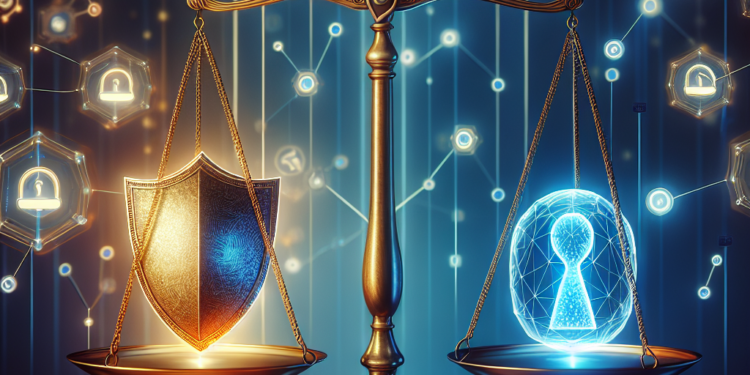AI-Driven Security: Balancing Efficiency and Privacy in Network Protection
In an era characterized by digital transformation, cybersecurity has become a critical concern for organizations across all sectors. As cyber threats evolve in complexity and frequency, traditional security measures struggle to keep up. This is where Artificial Intelligence (AI) steps in, promising enhanced efficiency in network protection. However, the integration of AI into security systems raises important questions about privacy and data protection that cannot be overlooked.
AI-driven security solutions leverage machine learning algorithms to analyze vast amounts of data in real-time. By identifying patterns and anomalies, these systems can predict and mitigate threats before they escalate. For instance, AI-based tools like user and entity behavior analytics (UEBA) continuously monitor user activity across networks, flagging unusual behaviors that may indicate a potential breach. According to a report by Cybersecurity Ventures, it is estimated that AI will help reduce cybercrime costs to the global economy by up to $3 trillion by 2025, illustrating the technology’s promising potential.
However, the efficiency of AI in cybersecurity does not come without trade-offs, particularly in terms of privacy. AI systems require extensive datasets to learn effectively, often processing sensitive information such as personally identifiable information (PII). This raises ethical and legal concerns regarding data protection regulations, such as the General Data Protection Regulation (GDPR) in Europe, which mandates strict guidelines on data collection and usage. Organizations must ensure that the data used to train AI models does not violate privacy rights, which can lead to legal complications and trust issues with customers.
Moreover, the "black box" nature of many AI algorithms means that their decision-making processes can be opaque, making it difficult for organizations to interpret how security decisions are made. This lack of transparency can exacerbate privacy concerns, as companies may inadvertently rely on biased or flawed data analysis. It is essential that organizations implement AI with a clear understanding of its limitations and work towards developing explainable AI models that prioritize transparency and accountability.
To effectively balance efficiency and privacy, organizations can adopt several best practices. First, data minimization should be a guiding principle: collect only the data that is necessary for AI training and analysis. This minimizes the risk of exposing unnecessary personal information. Additionally, anonymization techniques can be employed to protect individual identities while still allowing for effective data analysis.
Further, organizations should invest in regular audits of their AI systems to ensure compliance with privacy regulations and to assess the ethical implications of their data usage. By fostering a culture of accountability, businesses can navigate the complexities of AI-driven security while maintaining consumer trust.
Lastly, engaging with stakeholders—including legal experts, data scientists, and cybersecurity professionals—can provide diverse perspectives on how to effectively blend AI efficiency with robust privacy measures. Collaborative dialogues help ensure that AI tools are not only effective in combating cyber threats but also respectful of the individual’s right to privacy.
In summary, while AI-driven security solutions present a significant leap forward in the fight against cyber threats, organizations must tread carefully. By prioritizing data privacy and ethical considerations, businesses can harness the power of AI in a manner that is both effective and respectful of individual privacy rights. The balance between efficiency and privacy is critical in building a safe and trustworthy digital landscape for all.














